Customize Your iPhone: Change Folder Colors Easily
Intro
In today's digital age, the organization of apps and folders on smartphones can significantly impact the user experience. An iPhone, known for its sleek design and intuitive interface, also offers users the opportunity to personalize aspects of their device. Among these personalizations, changing folder colors is a unique way to infuse individuality into a standardized interface. This article aims to explore the effective techniques for altering folder colors on your iPhone, along with reasoning behind this customization.
The choice to change folder colors often stems from a desire for visual appeal and enhanced organization. By assigning different colors to folders, users can create a more visually stimulating environment. This not only helps in distinguishing folders at a glance but can also contribute to improved focus and productivity. A well-organized home screen can facilitate quicker access to apps, thereby streamlining users’ daily tasks.
In this guide, we will cover various methods to achieve the desired folder colors, investigating the simplicity of the iOS interface and sharing actionable steps for implementation. Additionally, common queries and troubleshooting tips will be discussed to ensure a smooth customization process.
Foreword to Folder Customization on iPhone
In recent years, customization of digital environments has become increasingly significant for users. The iPhone, a device familiar to millions, allows for various degrees of personalization to enhance user experience. Changing folder colors is a relatively simple yet effective way to create a more organized and visually appealing user interface. This personalization not only reflects individual preferences but also contributes to efficient navigation through applications and information.
Understanding the Importance of Visual Organization
Visual organization is crucial in maintaining both productivity and aesthetic appeal in digital spaces. Color-coded folders serve as a useful method to segment various types of information and functions within the iPhone. Users can quickly locate needed applications without excessive scrolling or searching. This speed and efficiency often lead to a more streamlined experience, which is particularly valuable in today’s fast-paced digital world. Organizing folders by color also reduces cognitive load, allowing for quicker visual recognition and recall.
Cultural and Psychological Impacts of Color Usage
Colors hold different meanings across various cultures and can evoke distinct emotional responses. For instance, blue can symbolize calmness, while red might incite excitement. Utilizing specific colors in folder organization can leverage this psychological impact, leading users towards enhanced focus or creativity. In the realm of technology, color plays a pivotal role in how individuals interact with software interfaces. Adapting folder colors on an iPhone can foster a sense of control over one's digital environment and encourage a more personalized utility of the device.
Personalized color choices can transform not just aesthetics but also user efficiency.
Exploring iOS Features for Folder Management
Understanding the features that iOS provides for folder management is essential for anyone looking to personalize their device effectively. From the operating system's innate design to how folders can enhance productivity and organization, these capabilities are integral to tailoring a user experience. For people balancing numerous apps and tasks, visual organization facilitates easier navigation. It can mean the difference between a cluttered screen and an efficiently arranged digital workspace.
Native Folder Functionality in iOS
iOS offers powerful native folder functionality that allows users to group related applications systematically. By utilizing folders, users can declutter their home screens, making it easier to locate frequently used apps. This feature supports a drag-and-drop interface, enabling users to create a folder by dragging one app on top of another. Once created, folders can house multiple applications, named according to the user's preference.
The aesthetics of folders in iOS are designed to be user-friendly. Customizable labels and a simple layout allow quick access to apps without distracting clutter. Moreover, folders can be easily rearranged or deleted as needed, ensuring flexibility in organization.
In essence, the native functionality provides a seamless integration into the iOS ecosystem, enhancing user efficiency while navigating through various applications.
Limitations of Default iOS Settings
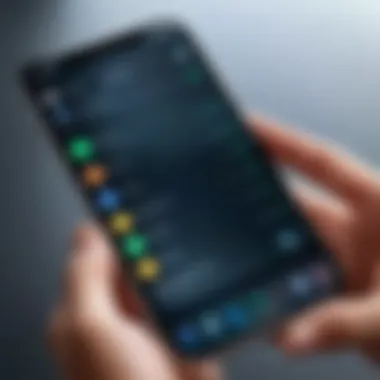
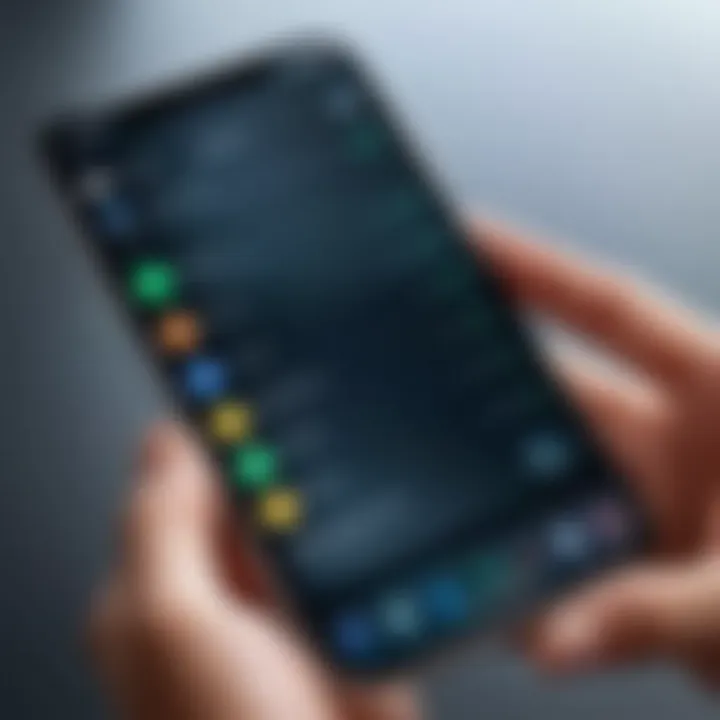
Despite the advantages of native folder functionality, the default settings in iOS do pose certain limitations. Primarily, users are restricted in terms of customizing the appearance of folders. They cannot change the colors or styles beyond what Apple provides. This lack of customization options may not suit users looking for a more personalized device experience.
Additionally, the organization within a folder is limited to alphabetical arrangement unless changed manually. The inability to alter individual app arrangements may be frustrating for users with specific preferences on how they wish to access their applications.
Another constraint is the lack of themes for folders, which can lead to a monotonous visual aesthetic. Users wanting to express their personal style through color may find themselves at a disadvantage. Given these limitations, exploring alternative methods for folder color customization becomes essential for making the iPhone truly reflective of one's personal taste.
"The limitations of default settings push users to seek innovative solutions for customization and personal expression on their devices."
Methods for Changing Folder Color
Customizing folder colors on an iPhone is a significant aspect for many users seeking a more personalized experience. It enhances the visual appeal and makes organizing apps more intuitive. By utilizing various methods, users can transform their folder aesthetics to align with their preferences or moods. This section will explore how to change folder colors effectively and efficiently, detailing the methods available, along with their benefits and considerations.
Utilizing Third-party Applications
The utilization of third-party applications presents a flexible approach to changing folder colors. Many users prefer this method due to its versatility and the variety of customization options available. Third-party apps often provide a broader spectrum of colors and themes compared to the native iOS settings.
Recommended Apps for Color Customization
Several apps stand out in the realm of color customization for folders. Applications like "Widgetsmith" and "Color Widgets" offer robust functionality for changing folder appearances.
- Key Characteristics: They feature user-friendly interfaces and numerous preset designs, making it easier for users to pick a style that resonates with them.
- Benefits: These apps often include features that allow users to create personalized widgets that complement their folder color choices.
- Unique Feature: One distinct advantage is the ability to integrate dynamic wallpapers or themes, which can elevate the organizational experience.
However, reliance on third-party apps can come with certain drawbacks, such as potential privacy concerns and the need for periodic updates.
How to Download and Install Apps
Downloading and installing a third-party application is a straightforward process. The App Store is the primary source for obtaining these applications.
- Key Characteristics: The App Store guarantees safety and security for downloads, providing users with a level of trust in the applications available.
- Benefits: Users can easily search for desired applications by simply entering keywords related to folder customization.
- Unique Feature: The App Store allows users to read reviews and ratings, which can guide selection and help to ensure they choose a reputable app.
While downloading apps is generally smooth, users should remain cautious of permissions requested by some applications.
Creating Custom Shortcuts with Siri
Creating custom shortcuts using Siri is another effective method for changing folder colors. This approach may appeal to tech-savvy individuals who appreciate automation and personalization in their daily interactions with their devices.
Step-by-Step Shortcuts Creation
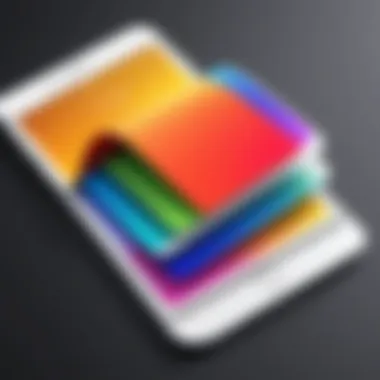
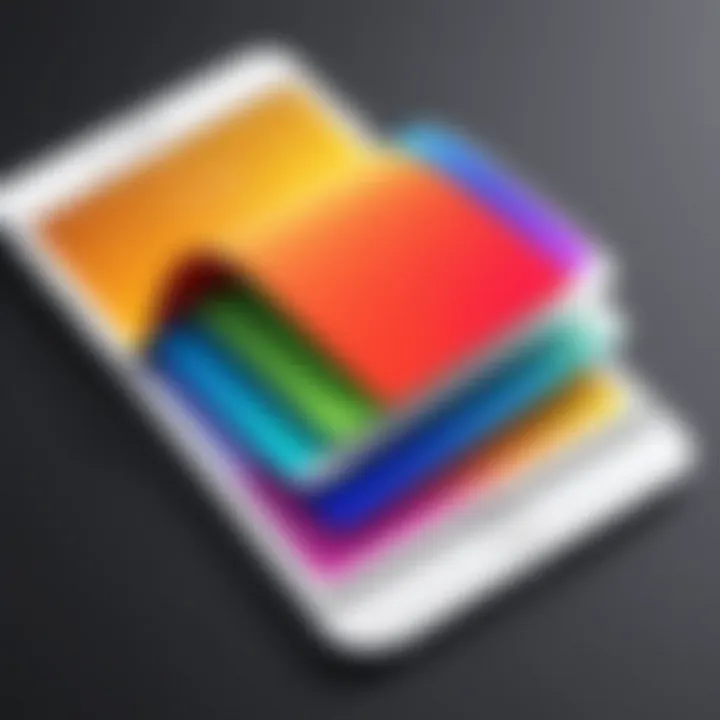
Setting up custom shortcuts with Siri is an engaging process. Users can create shortcuts that link to specific services, including changing folder colors.
- Key Characteristics: Shortcuts provide automation that saves time and enhances user experience.
- Benefits: Once created, shortcuts offer quick access to customized categorizations, improving the device's usability.
- Unique Feature: Users can assign unique phrases to their shortcuts, streamlining the command process.
The main drawback might be the initial learning curve when understanding how to navigate the Shortcuts app effectively.
Integrating Colors into Shortcuts
Integrating colors into created shortcuts can further enhance the customization. Users have the option to assign specific colors to actions or folders using simple commands.
- Key Characteristics: This method leverages Siri's voice recognition capabilities, allowing an intuitive way to alter folder presentation.
- Benefits: It offers a seamless integration of visual and functional aspects, aligning usage with aesthetic preferences.
- Unique Feature: The ability to create unique and memorable voice prompts makes it engaging; however, users must ensure consistent naming for effective recall.
The challenge here might involve the necessity of setting up each command correctly to avoid confusion during execution.
Step-by-Step Guide to Changing Folder Colors using Native Methods
Understanding how to change folder colors natively on an iPhone holds several advantages for users. This feature encourages better visual organization and a more personalized experience. Customizing folders allows for quick identification of applications, which can enhance productivity. It also provides a unique aesthetic that reflects individual preferences, steering away from the standard design. Essentially, this native method empowers users with simple controls that can make a significant difference in day-to-day interactions with their devices.
Navigating to Settings
To start customizing your folder colors through native settings, you must first access the Settings application on your iPhone. Here's how to do it:
- Locate the Settings Icon: Find the gear-shaped icon on your home screen and tap it.
- Scroll Down: Once in Settings, scroll down to find Display & Brightness. This is where essential color adjustments can be accessed.
- Select Color Filters: Some users may need to opt for Accessibility options, particularly if you want to apply color adjustments that enhance visibility. It’s important to be aware that not every iPhone model supports native folder color changes in the same way. Checking compatibility with your device is prudent.
Choosing the Right Template for Folders
After navigating to the appropriate settings, the next step involves choosing the correct template for your folders. This is crucial, as different templates can provide various backgrounds and effects, potentially influencing folder aesthetics and function. Here is a guide on how to choose templates:
- Explore Existing Template Options: Apple offers several default template styles which can influence folder colors indirectly. Though they do not alter colors drastically, they set a tone that complements your theme.
- Assess Your Needs: Consider how often you access specific folders, and choose a template that resonates with your workflow and preferences.
- Organize by Themes: If you have many applications, using themed templates can organize folders by function or category. For example, a green template for nature-related apps can develop an immediate recognition pattern.
By carefully choosing the right templates, users can strategically manage the color and appearance of their folders. This enhances usability and can augment the overall aesthetic of the iPhone interface.
Troubleshooting Common Issues
Understanding and addressing common issues that arise while changing folder colors on an iPhone is crucial for ensuring a seamless user experience. This section will highlight specific areas where users may encounter difficulties, along with relevant solutions. The significance of mastering troubleshooting techniques lies in minimizing frustration and optimizing performance for users aiming to personalize their iPhone interface. When customization efforts face obstacles, knowledge and preparation can enhance one’s problem-solving capabilities.
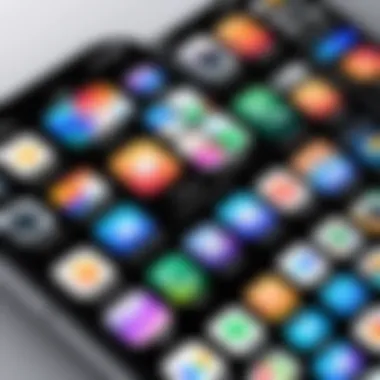
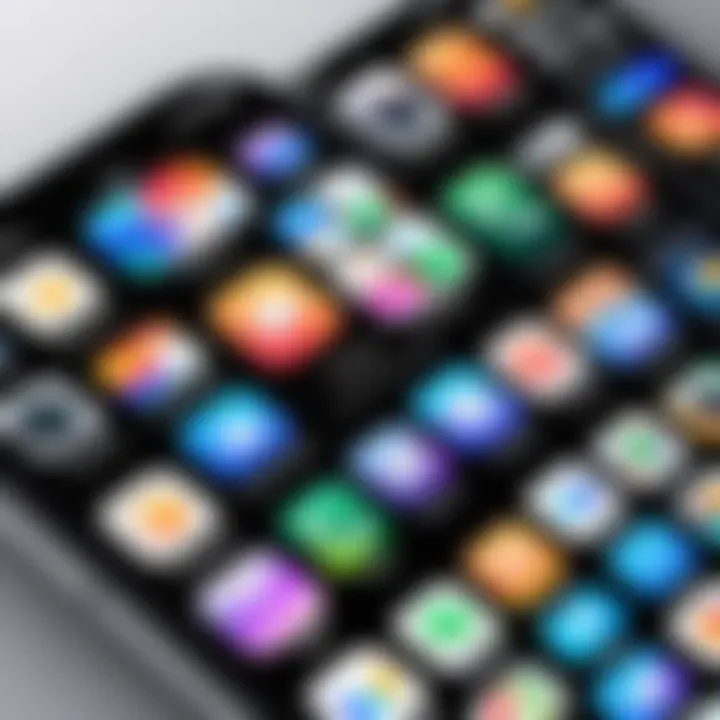
Problems with Third-party Applications
Many users turn to third-party applications like Color Widgets or Widgetsmith to achieve diverse folder colors beyond the default options. However, these applications can present challenges. One common issue is compatibility with the latest iOS updates. Users might find that older versions of these apps do not function properly after an iOS update.
To prevent these problems:
- Regular Updates: Always ensure your third-party applications are updated to their latest versions, as developers often patch issues and improve compatibility.
- App Reviews: Check user reviews in the App Store before downloading to assess whether others have encountered similar problems.
- Clear Cache: If an app runs poorly, clearing its cache or reinstalling it might help restore functionality.
"The troubleshooting process not only fixes issues but also enhances your overall experience with iOS customization."
Technical Glitches in iOS
Technical glitches within the iOS system can also impede users trying to change folder colors. Some common glitches include unresponsive icons and slow performance after modifications. Such technical issues can stem from background processes consuming system resources or software bugs introduced in recent updates.
Here are a few effective measures:
- Restart Device: A simple restart often resolves many glitches, refreshing the operating system.
- Check for iOS Updates: About once a month, Apple releases patches for bugs. Keeping your device updated can eliminate known issues.
- Reset Settings: If persistent problems occur, resetting settings to default may help, but be cautious as this can erase saved information or customizations.
Addressing these issues proactively can greatly improve the user experience when personalizing folder colors on an iPhone.
Ending on Personalizing Your iPhone Experience
Personalizing the iPhone experience is critical for many users. This customization extends beyond mere aesthetics; it impacts usability and overall satisfaction. When users change the colors of their folders, they create a tailored environment that allows for more efficient navigation. The ability to identify and access apps quickly can lead to better productivity. Furthermore, visual organization can decrease cognitive load, making the user experience smoother and more enjoyable.
Making folders visually distinct serves a function. It makes the device feel more like an extension of the user’s personality, allowing individuality to shine through. Colors can also function as visual cues. For example, users might choose specific colors to categorize their folders based on tasks, such as work, leisure, or urgent matters. This approach not only brings a personal touch but enhances functionality.
Moreover, adapting the iPhone's look fosters a deeper connection between the user and their device. As users invest time into customization, they often develop a sense of ownership. In a broader context, engaging with technology in a personal way can improve mental wellness. Seeing a device that feels more personal can foster a positive mindset, influencing how the technology is perceived in daily life.
Ultimately, personalizing folders on an iPhone brings both aesthetic pleasure and functional advantages. This article has presented various methods and tools for achieving such customization effectively.
Recap of Key Customization Techniques
To summarize the techniques discussed in the article:
- Third-party Applications: Many apps are available to change folder colors. These apps offer a range of customizable features, enhancing visual aesthetics and functionality. Some recommended apps include Widgetsmith and Color Widgets.
- Creating Custom Shortcuts: Users can take advantage of the Shortcuts app to create personalized folder colors. By following a few steps, folder management within the home screen can become highly customized.
- Native iOS Settings: While there are limitations, some basic customization can still be achieved through the Settings app. It is essential to be familiar with what options iOS offers natively.
Future Trends in Mobile Customization
Mobile customization is rapidly evolving. As technology advances, the potential for deeper customization will likely increase. Here are some trends to watch for in the coming years:
- AI-Powered Personalization: With artificial intelligence, mobile devices will become smarter in understanding user preferences. Future updates can suggest modifications based on user behavior, enhancing personalization without much effort.
- Dynamic Themes: Expect more dynamic themes that change based on time of day or user activity. Instead of merely static colors, folders may adapt to create a more engaging user experience.
- Enhanced Integration with Other Devices: The future may bring better compatibility with smart home devices, allowing users to change their mobile folder's aesthetics based on the environment.
In essence, the landscape of mobile customization is heading toward a more integrated, intuitive experience, marrying personal preferences with effective functionality.







